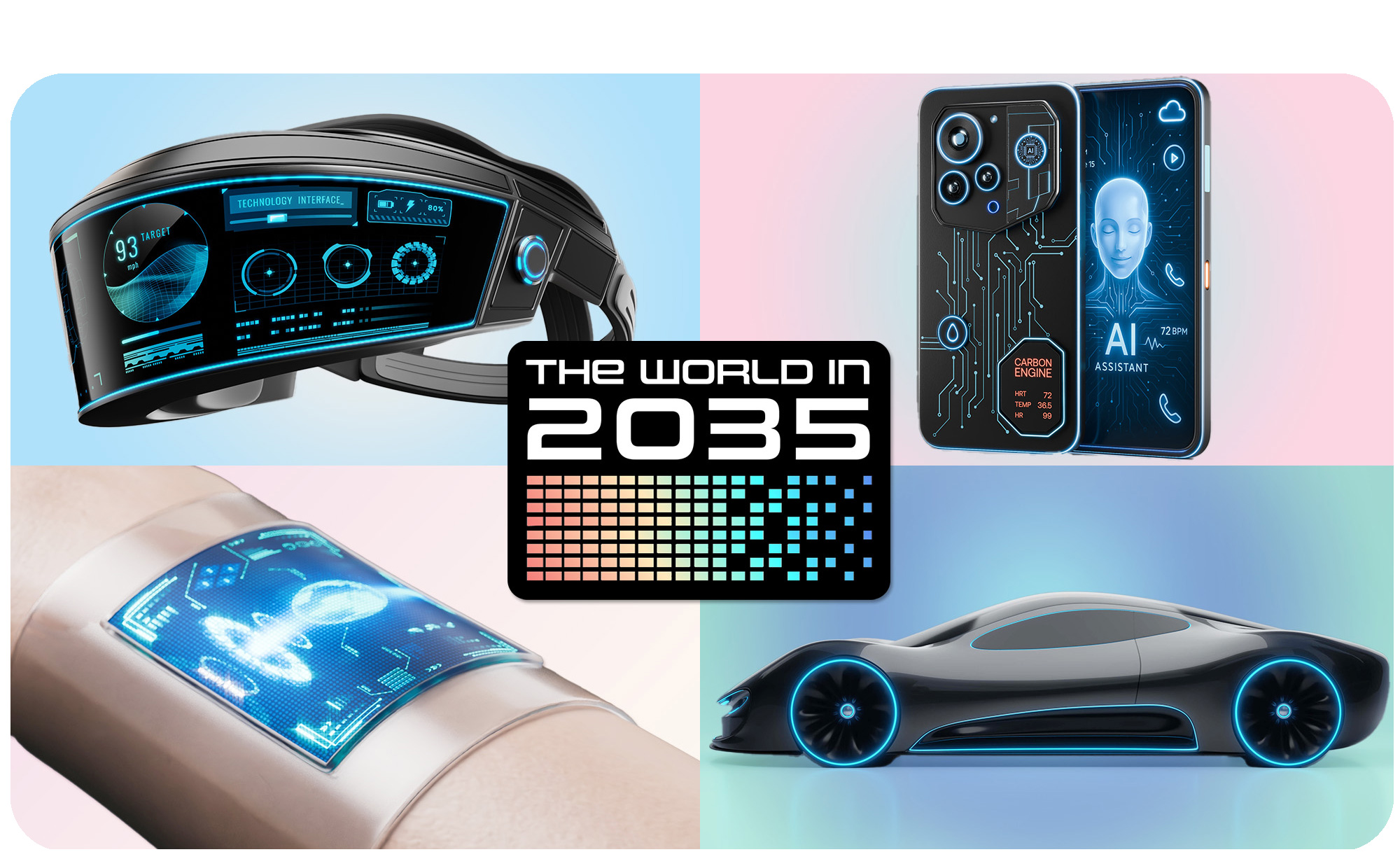I dreamed of flying cars, but the automotive reality of 2035 is even more revolutionary
A new driving revolution is coming
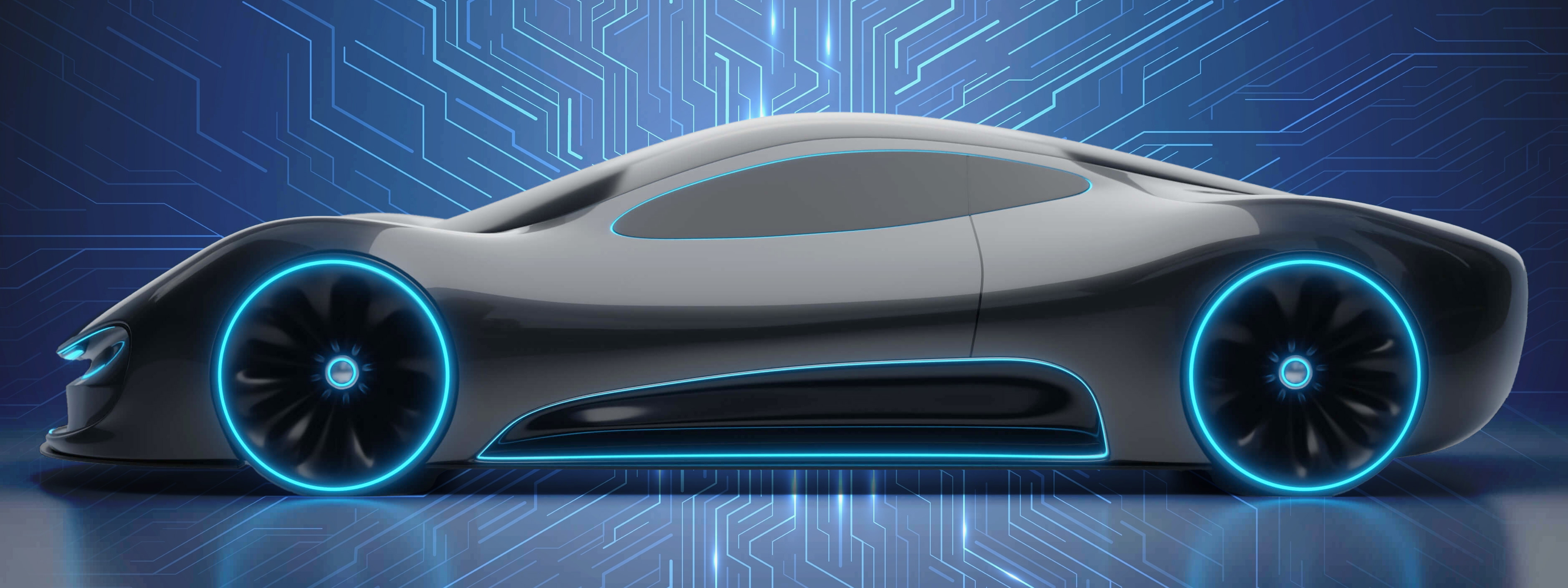
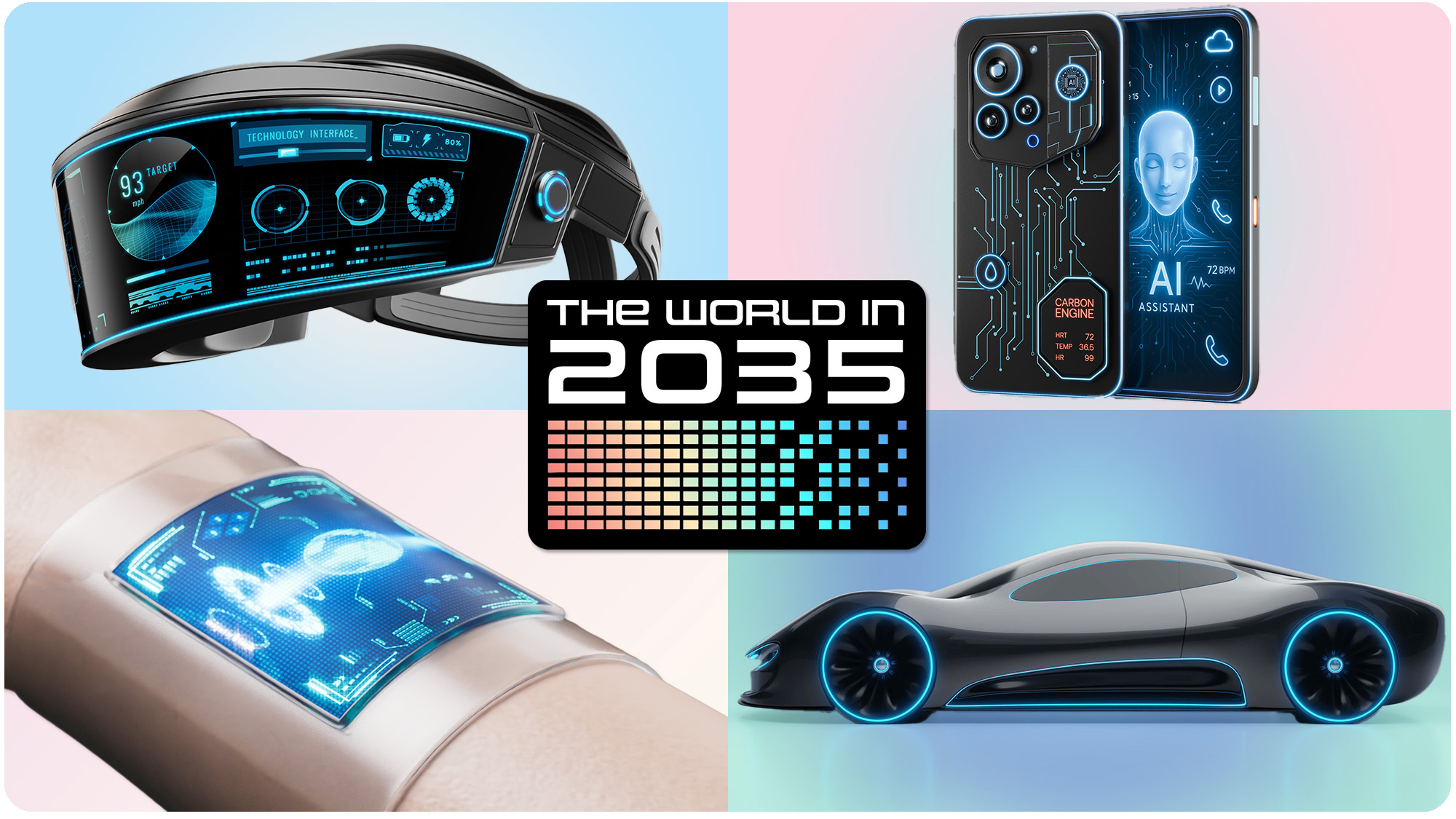
AI | Smart Glasses | Wearable Tech
Smartphones | iPhones | Robots | Cars | TVs
Much like most millennials growing up in the 80s, I dreamt of a future where flying cars rule the sky. However, that didn’t turn out to be the case as 2015 came and went with my memories about how Back to the Future Part II painted a world with skyways and automated aerial vehicles.
The world in 2035 is less than a decade away, and while there’s still a certain level of obscurity about what’s plausible when it comes to car tech, relentless innovation could get us one step closer to reaching that vision of the future.
From fully automated self-driving cars, infrastructural shifts in power delivery, and even how we buy vehicles, cars in 2035 will look a lot different than what they do today.
Where we’re going, there will probably still be roads — but it’s how we get to our destination that will have the biggest changes. I’ll explain what’s in the realm of possibility.

Beyond cruise control — autonomous driving will be a revolution
I’ve tested more than 30+ vehicles in the last year, ranging from electric cars that run super quiet to plug-in hybrids that give drivers a taste of both worlds. I’ve driven luxury models too that make it more convenient than ever before to drive thanks to smart cruise control.
By 2035, fully autonomous driving vehicles should be more widespread than what it is today. There’s a lot involved to achieve Level 5, which according to the SAE International (Society of Automotive Engineers) is full driving automation that doesn’t involve human interaction. I’ve experienced intelligent driving with today’s adaptive smart cruise control systems, like the one in the Cadillac Lyriq that will change lanes all on its own, but true driving autonomy goes much deeper.
"There's still a lot of uncertainty whether Lidar will be necessary to reach Level 5 autonomy, which is a huge debate and still a considerable added cost.”
— Anshel Sag, principle analyst, Moor Insights & Strategy
One of the biggest challenges is coordinating all the different systems for full automation in an EV to happen seamlessly. Currently, the most reactive advanced driver-assistance system (ADAS) I’ve experienced in a commercially available EV comes from Rivian, which leans on various sensors, high-quality cameras with deep dynamic range, and advanced processing algorithms.
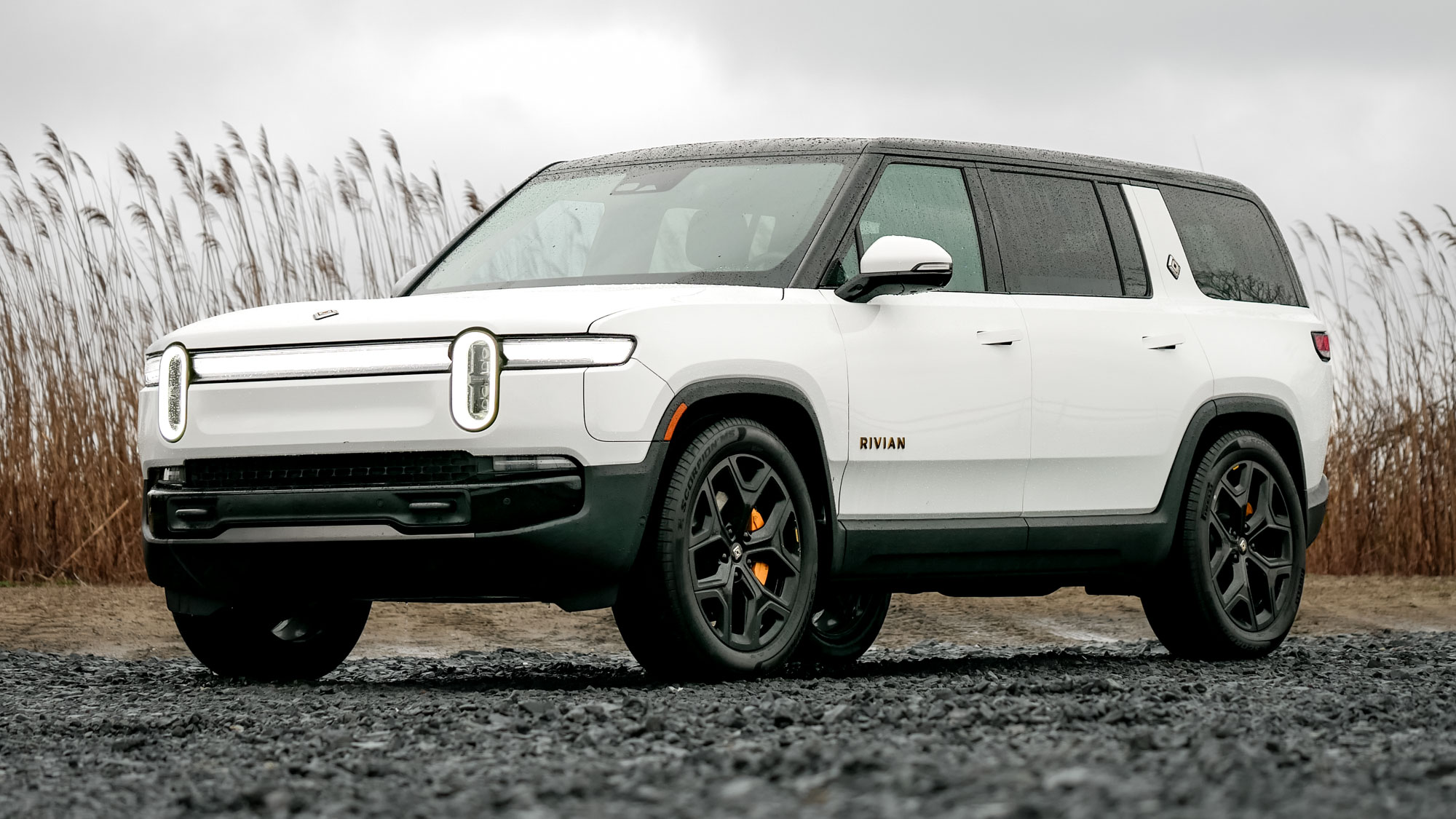
“Because we have full end-to-end ownership of the code and models that run on-vehicle, we’re able to rapidly deploy advancements developed for LLMs to our own Large Driving Model (LDM),” explains James Philbin, VP of Autonomy and AI at Rivian. “The Rivian LDM gets better with every software update, which drives customer delight, trust and adoption.
I’ve seen how reactive the Rivian R1S and R1T are with being aware of their nearby surroundings, but Level 5 autonomy would require deeper intelligence — in such a way vehicles could be anticipatory.
Anshel Sag, principle analyst with Moor Insights & Strategy. believes that Level 5 will be achievable by 2035, but it wouldn’t be as widespread. “ADAS needs to become faster, cheaper, and lower power, which it isn't today, if we want to reach level 5 autonomy,” explains Sag.
“High-end ADAS solutions are still computationally costly and limited to mostly high-end vehicles or models, said Sag. “There's still a lot of uncertainty whether Lidar will be necessary to reach Level 5 autonomy, which is a huge debate and still a considerable added cost.”
I share many of these concerns with current implementations, especially when adaptive cruise control systems are largely added options as opposed to being standard. The systems in place right now do a good job of understanding the localized environment, like what cars are around, but they lack the vision to see farther down the road.
Sony-Honda’s Afeela 1 has an ambitious goal of reaching Level 3 autonomy when it launches in 2026, which would have the ability to take complete control of the vehicle’s driving — but human intervention would be a fallback in the event the system can’t operate correctly. Level 5, on the other hand, wouldn’t require any operation from a human passenger.
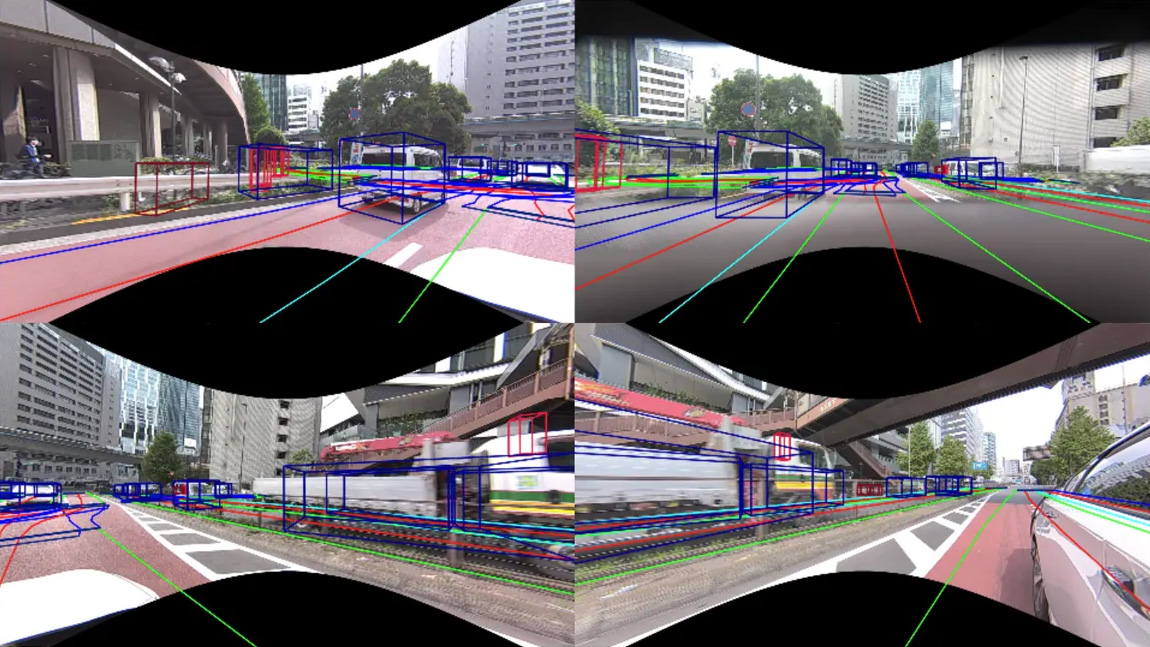
Earlier this summer, the Xpeng G7 was launched in China as a direct Tesla Model Y competitor in China, where it intends to show off its autonomous driving capabilities. What’s interesting is how AI can be leveraged to deliver autonomous driving that reacts to complex conditions.
“The World Foundation Model is the key to XPENG's rapid development of advanced assisted driving, explained He Xiaopeng, Chairman and CEO of Xpeng. “This technological breakthrough is embodied in our latest SUV XPENG G7, the world's first AI-powered vehicle equipped with an L3 computing platform.” This model leans on AI to adapt to complex driving conditions in real time. There’s clearly a lot of data coming in from various systems, which is why effective computing power is needed.
I’m very optimistic about reaching Level 5 autonomy by 2035, which won’t only be a technological revolution in my opinion, but a societal one as well. Just think: it would give the ability to use the time for other things, like catching up on work or bingeing that new show on Netflix.
Meanwhile, those with disabilities, accessibility challenges, and aging adults could still have some form of mobility to get around.

AI agents behind the wheel
Today’s best electric cars have a lot of features that make the in-car experience remarkable. From big and expansive touchscreens that adorn the dashboard, to more premium features like head-up displays that show key information in the windshield, the interiors are increasingly becoming more immersive.
However, the biggest change to the in-car experience won’t necessarily come down to the aesthetics or hardware — but rather, how AI will become a central part of it. “In-vehicle voice assistants today provide easy access to information while helping to keep the driver focused, and these assistants will only continue to evolve,” explains General Motors. But so far, there hasn’t been a whole lot of innovation around this yet, but I think it’s only a matter of time until it's ubiquitous by 2035.
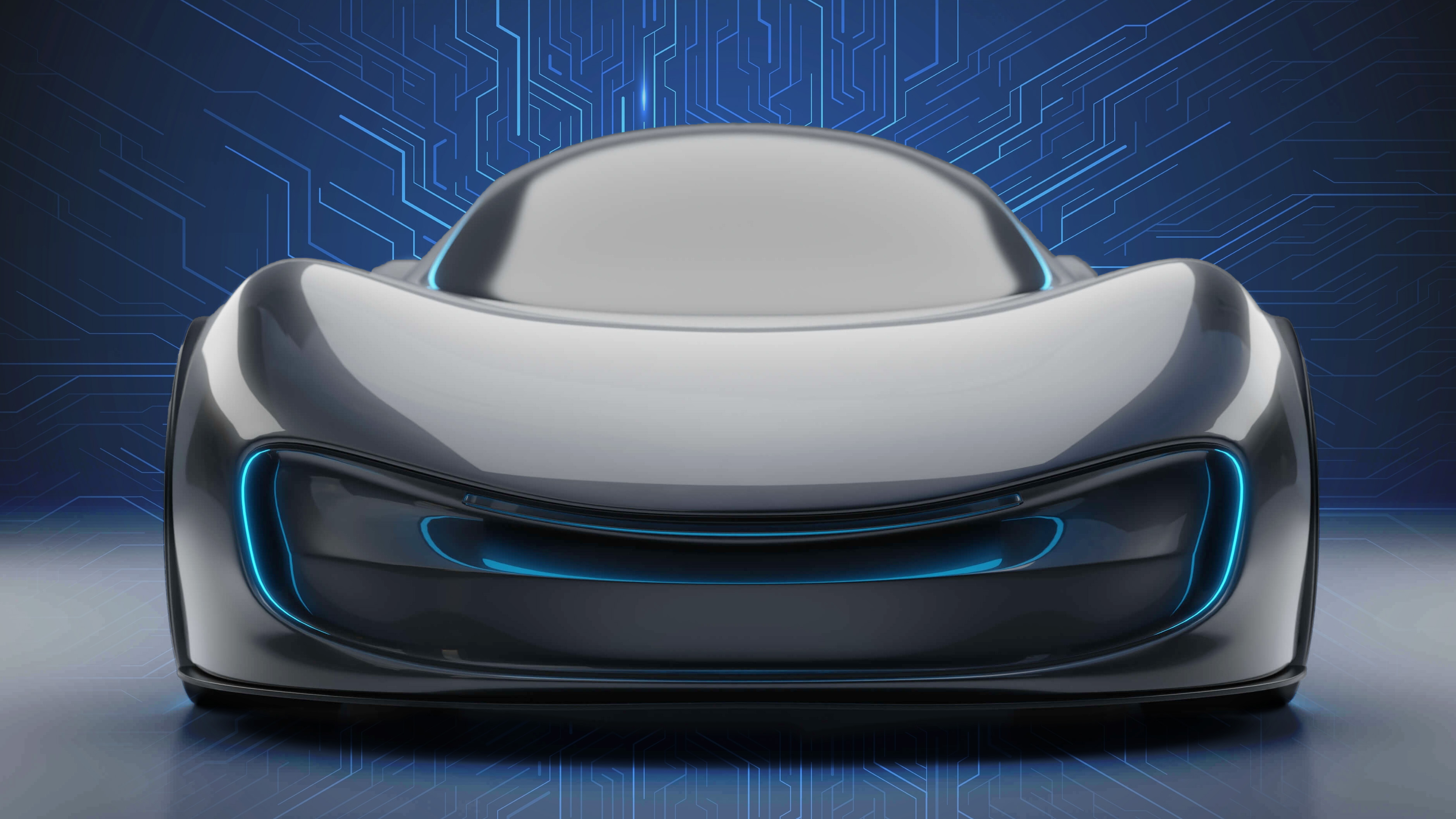
We’ve already reported how Android Auto 14.0 teases Google Gemini integration, but it’s unknown at this point how car makers would allow AI Agents, such as Gemini, to have deeper access to these in-car experiences. While I think it’d be easy to lean on AI to ask for restaurant recommendations along a route, it’s another to give these AI agents access to key car functions.
The biggest change to the in-car experience won’t necessarily come down to the aesthetics or hardware — but rather, how AI will become a central part of it.
While some EVs have a ton of buttons all around the dashboard, there are others that go the minimalist route. Either way, I still find it confusing to do simple things like adjusting my seat, turning on the AC, and even figuring out how to open the trunk.
“I think that's where AI should come in. AI should be helping the driver understand what information is important and relevant to the driver without overloading the driver with too many distractions,” explained Sag.
The deeper issue will center around how much access car makers will give to these ‘outside’ AI agents. This is at the center of the debate between cars that offer Android Auto or CarPlay, versus automakers that use their own in-house infotainment systems.
At the very least, I think it would be a service to all drivers for car makers to invest heavily in AI with their in-car experiences. So, rather than going through all the steps to adjust the air conditioning settings, I could simply ask AI to do it, including different temps for the front and back if I wanted.
And why not do a few things at once? I could just say “defog the windshield, order my Starbucks favorite for pick up and fire up the latest episode of ‘Smartless’ on Spotify,” and my car would know what to do.

Conquering range anxiety once and for all
Apart from cost, the other hurdle that EVs continue to face is range — which is a valid concern because the most efficient EVs I’ve tested still don’t come close to matching the range offered by hybrid cars. However, there’s been a lot of innovation around this in the last decade and I suspect it to be less of a concern by 2035.
EVs like the Lucid Air Pure already prove how they’re equipped to handle long distance driving with a range of up to 419 miles on a single charge, but battery tech will still require a fair amount of innovation. That’s why the type of battery matters. Most EVs use lithium-ion batteries, but there’s an ongoing battle between what solid-state batteries could come out on top.
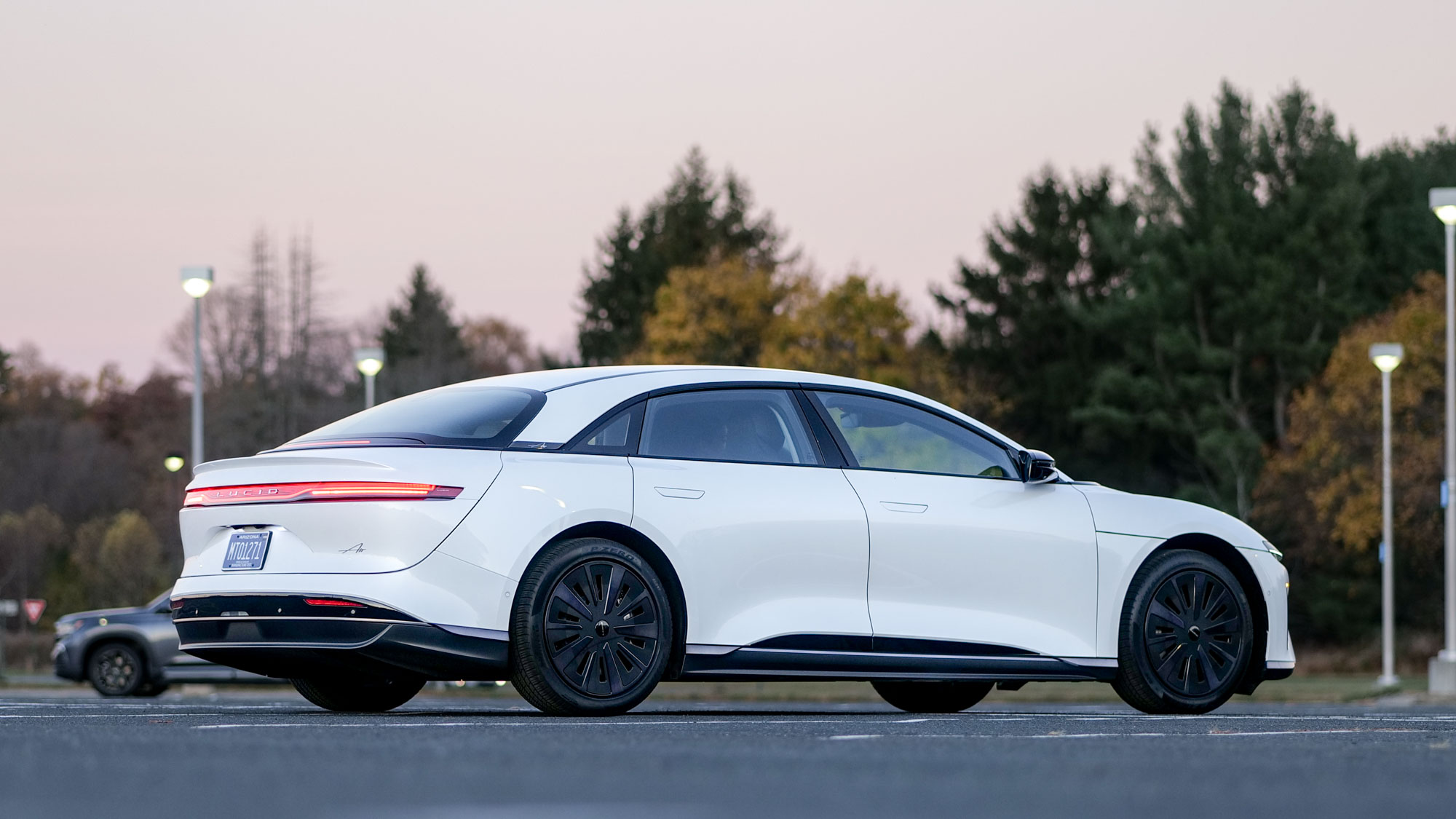
One leading candidate for this is General Motors and LG Energy Solution efforts around commercializing lithium manganese-rich (LMR) prismatic battery cells.
“I think that GM and LG's LMR tech could help with larger vehicles and that should hit the market in 2028, likely replacing its current Ultium platform,” says Sag when asked about battery innovations. “We are already starting to see Silicon Anode gain some traction in consumer products, providing an additional 20% of battery density and some are exploring that for automotive applications.”
“We’re adding new battery chemistries and form factors to our portfolio that deliver the optimal mix of range, performance, and cost for different EV segments,” explains GM. “One example is our pioneering work on lithium manganese-rich (LMR) battery cells, which deliver up to 33% higher energy density than leading lithium iron phosphate (LFP) cells — at a comparable cost.”
Besides developing new solid state batteries, there’s also the challenge of charging them. With today’s solutions, Level 3 charging offers faster DC speeds that can easily give most EVs full charges in about 30 minutes — but that does very little to convince those used to the instantaneous fill-ups with gasoline.
“As the charging infrastructure continues to evolve, becoming both more powerful and more reliable, it will effectively eliminate "range anxiety”, and open the door for broader EV adoption.”
— Wassym Bensaid, Chief Software Officer, Rivian
Both NACS (North American Charging Standard) and CCS (Combined Charging System) standards are more accessible now than what they were 5 years ago, but even as more EV charging stations crop up across the country, the charging tech needs to keep pace.
There are already car makers that are in development with 800V architectures, which aim to cut charging time in half. Rather than spending tens of minutes to charge, 800-volt charging could whittle it down to just a few minutes.
“As the charging infrastructure continues to evolve, becoming both more powerful and more reliable, it will effectively eliminate "range anxiety”, and open the door for much broader EV adoption,” states Wassym Bensaid, Chief Software Officer at Rivian.
This isn’t much of a problem in major cities and the towns surrounding them, but there are still big pockets around the country where EV charging stations are few and far between.

What’s up with flying cars?
Back to the Future Part 2 reeled me into this idea of flying cars in the future, but that’s not something I think will be practical by 2035 — especially when it comes to commercial solutions for your average Joe. It’s still going to remain largely science fiction, sadly enough, even though there has been movement in this area.
Today’s flying cars are nothing like they’re portrayed in the movies. Instead, these so-called flying cars look more like oversized drones than actual cars. Instead of rocket boosters or some other sci-fi propulsion tech you see in movies, these flying cars lean on propellers for aerial lift.
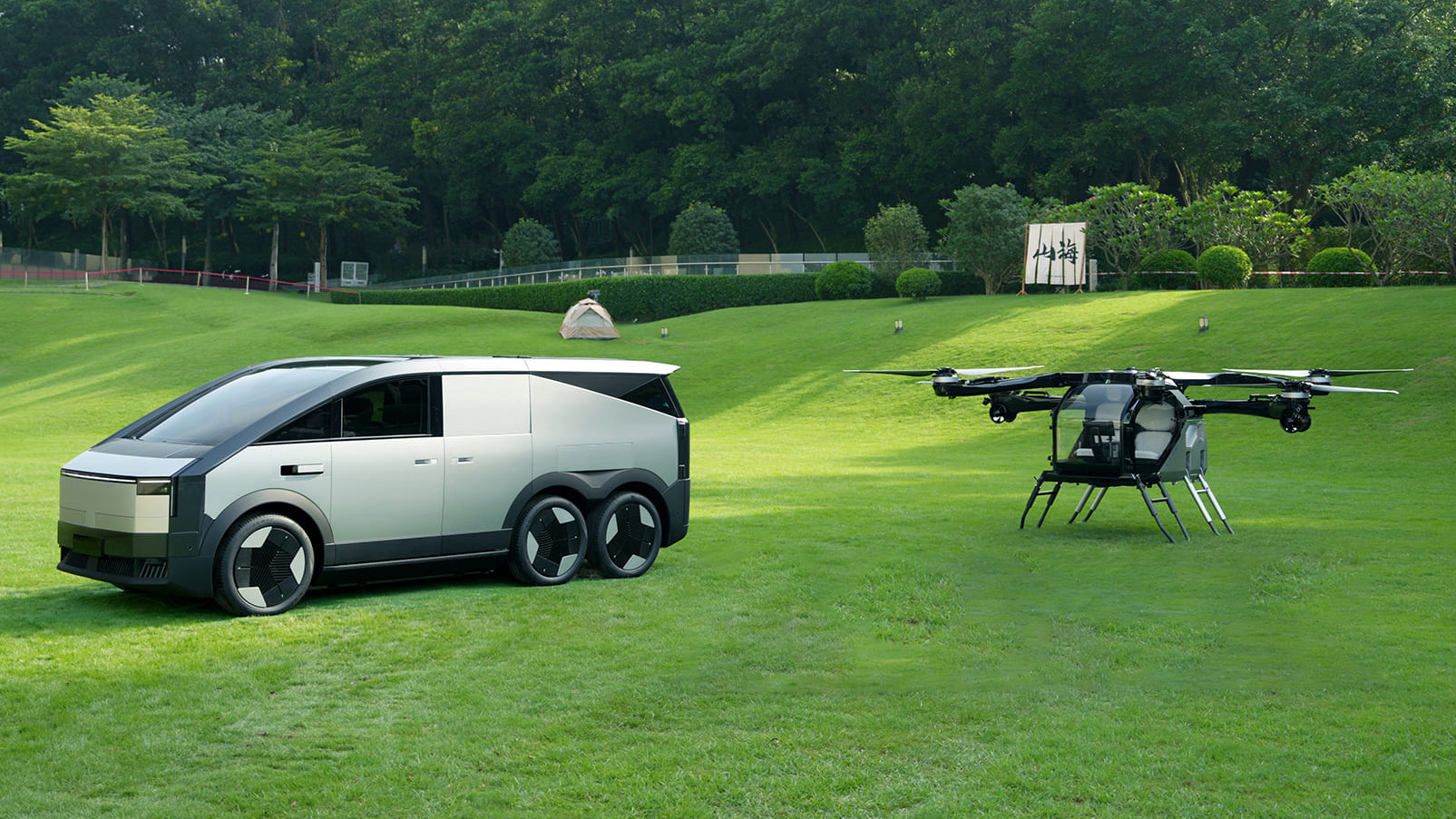
Take the Xpeng Land Aircraft Carrier, which was previewed at CES 2025. It has much more in common with today’s commercial drones used by hobbyists than the flying pods portrayed in “The Jetsons.”
However, it’s not coming to the U.S. — and for good reason too. There’s just a lot more involved with flying cars, and while there have been startups that received FAA approval, like Alef Aeronautics’ Model A, the average person still wouldn’t be able to fly them.
That’s because flying these eVTOL (electric vertical take-off and landing) flying cars would likely require a pilot’s license. The FAA is constantly changing and adapting regulations to keep up with all this, but don’t count on the average person taking control of a flying car any time soon. There’s a substantial amount of training and flight time required before being issued one, let alone the cost of acquiring one.
Xpeng CEO, He Xiaopeng, doesn’t directly reveal the company’s plans for its flying vehicles, but I think it’s intriguing to note the company’s other ambitions — like how it’s currently utilizing an 800V high-voltage SiC platform with its EVs. “We have utilized a lithium iron phosphate battery platform to achieve a full-range 800V high-voltage SiC platform, 5C ultra-fast charging AI battery, and an exceptional range of 702 km.” Given how there are weight concerns for flying vehicles, trimming out as much as possible would only increase their efficiency.
“I'm not sure we're anywhere near a place where [a flying car] can be used by the average person anytime soon,” explains Sag. “Flying anything requires considerably higher skill, awareness and training and the only way I see it working is autonomously.” I consider myself a confident drone pilot, but I wouldn’t willingly hand over the controls of my drone to a total stranger whose never flown one.
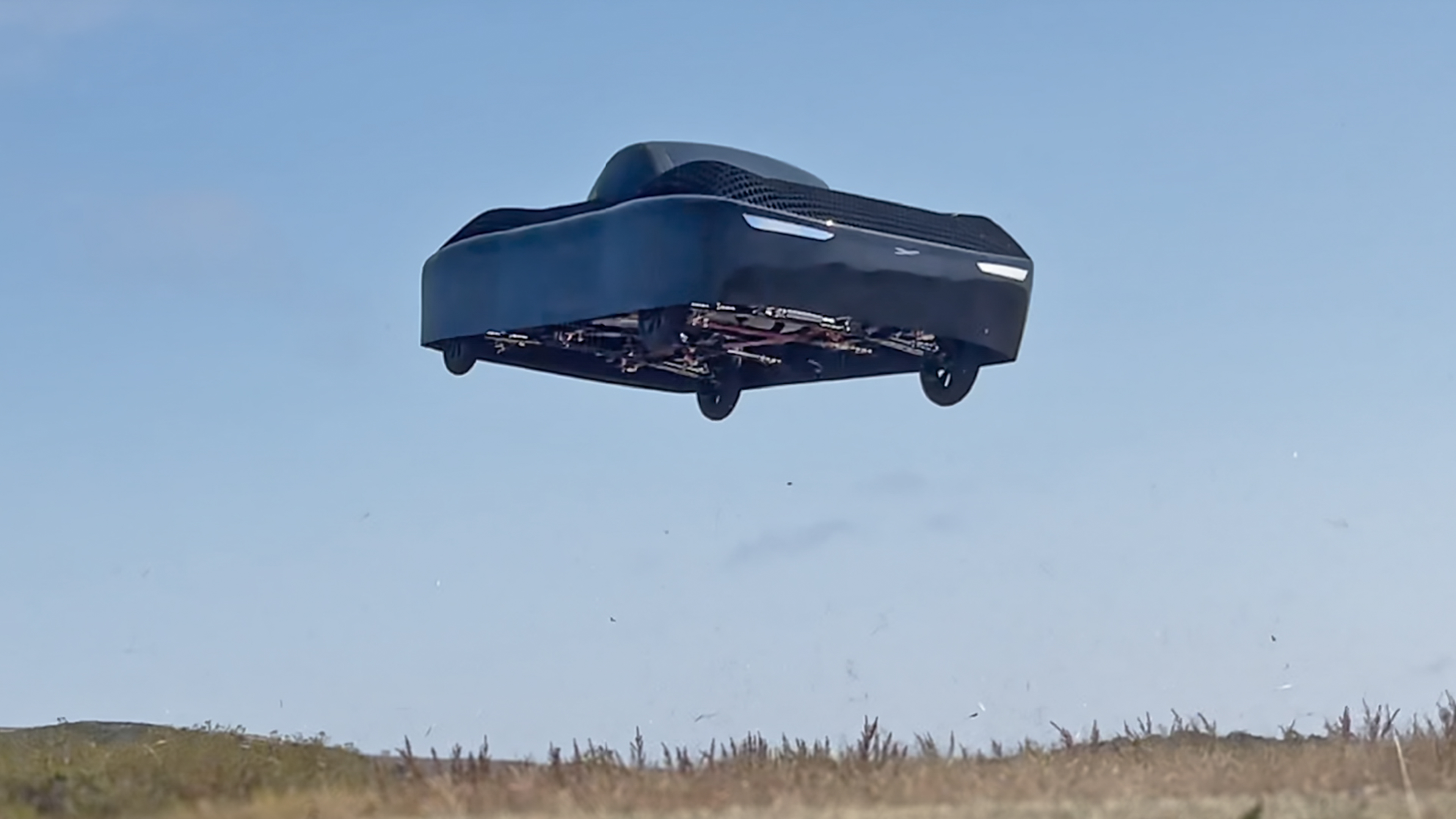
Flying cars that we personally own and control might not be a reality in 2035, but I could see how eVTOLs could be used for autonomous applications with human transport. Flying a predefined flight path is already easy enough for most hobbyist drones, like the DJI Mini 4 Pro, so I suspect we'll see these "flying cars" primarily as part of air taxi services or for commercial deliveries.
They’d be operated autonomously or remotely piloted by a licensed professional. While the dream of personal aerial vehicles soaring through the sky like in Back to the Future may remain a distant fantasy, the more practical reality of air mobility as a service, operated by trained experts or autonomously, is a much more probable future.


John’s a senior editor covering phones for Tom’s Guide. He’s no stranger in this area having covered mobile phones and gadgets since 2008 when he started his career. On top of his editor duties, he’s a seasoned videographer being in front and behind the camera producing YouTube videos. Previously, he held editor roles with PhoneArena, Android Authority, Digital Trends, and SPY. Outside of tech, he enjoys producing mini documentaries and fun social clips for small businesses, enjoying the beach life at the Jersey Shore, and recently becoming a first time homeowner.
You must confirm your public display name before commenting
Please logout and then login again, you will then be prompted to enter your display name.
